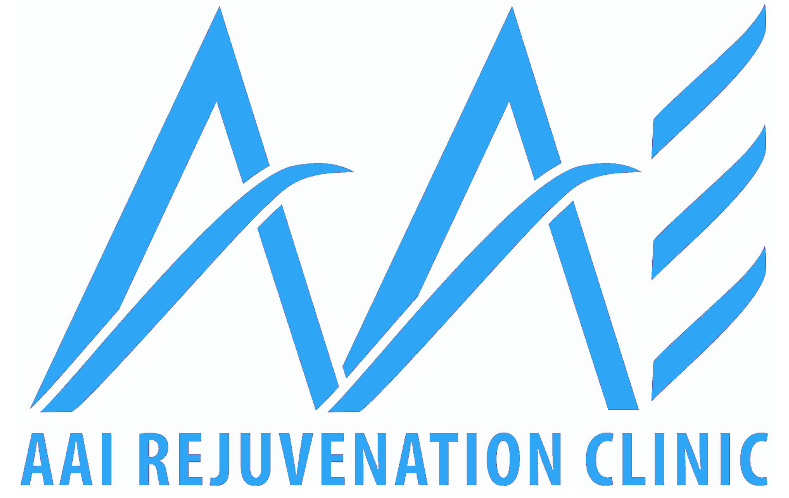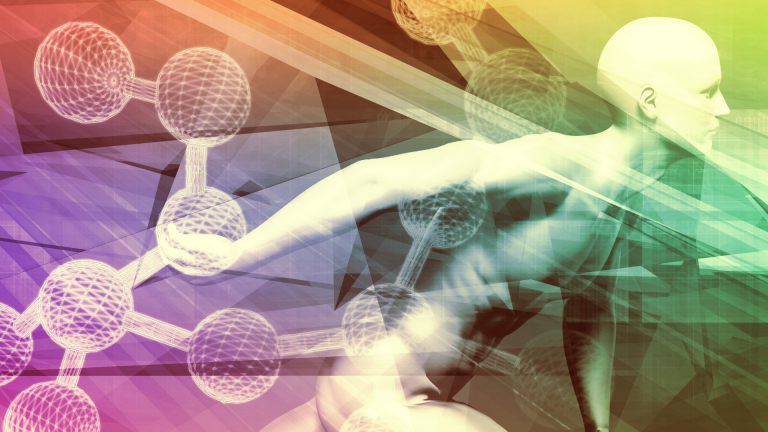Testosterone Enanthate Description
Testosterone Enanthate Description Testosterone Enanthate Injection, USP provides Testosterone Enanthate Description, USP, a derivative of the primary endogenous androgen testosterone, for intramuscular administration. In their active form, androgens have a 17-beta-hydroxy group. Esterification of the 17-beta-hydroxy group increases the duration of action of testosterone; hydrolysis to free testosterone occurs in vivo.
Each mL of sterile, colorless to pale yellow solution provides 200 mg Testosterone Enanthate, USP, in sesame oil with 5 mg chlorobutanol (chloral derivative) as a preservative. Testosterone Enanthate, USP is designated chemically as androst-4-en-3-one, 17-[(1-oxoheptyl)-oxy]-, (17β)-.
Structural formula:
Testosterone Enanthate – Clinical Pharmacology
Endogenous androgens are responsible for the normal growth and development of the male sex organs and for maintaining secondary sex characteristics. These effects include growth and maturation of the prostate, seminal vesicles, penis, and scrotum; development of male hair distribution, such as beard, pubic, chest, and axillary hair; laryngeal enlargement; vocal chord thickening; alterations in body musculature; and fat distribution.
Androgens also cause nitrogen, sodium, potassium, and phosphorus retention and decrease urinary excretion of calcium. Androgens have been reported to increase protein anabolism and decrease protein catabolism. Nitrogen balance is improved only when sufficient calories and protein intake.
Slideshow: Breast Cancer Therapy: Right On Target Breast Cancer Therapy: Right On Target Androgens are responsible for the growth spurt of adolescence and the eventual termination of linear growth brought about by the fusion of the epiphyseal growth centers. In children, exogenous androgens accelerate linear growth rates but may cause a disproportionate advancement in bone maturation.
Use over long periods may result in the fusion of the epiphyseal growth centers and termination of the growth process. Androgens have been reported to stimulate the production of red blood cells by enhancing the production of erythropoietic stimulating factors.
During exogenous administration of androgens, endogenous testosterone release is inhibited through pituitary luteinizing hormone (LH) feedback inhibition. At large doses of exogenous androgens, spermatogenesis may also be suppressed through feedback inhibition of pituitary follicle stimulating hormone (FSH). There is no substantial evidence that androgens are effective in fractures, surgery, recovery, and functional uterine bleeding.
PHARMACOKINETICS
Testosterone injection esters are less polar than free testosterone. Testosterone esters in oil injected intramuscularly are absorbed slowly from the lipid phase; thus, Testosterone Enanthate can be given at two to four weeks intervals. Testosterone in plasma is 98 percent bound to a specific testosterone-estradiol binding globulin, and about two percent is free. Generally, the amount of this sex-hormone binding globulin (SHBG) in the plasma will determine the distribution of testosterone between free and bound forms, and the free testosterone concentration will determine its half-life.
About 90 percent of a dose of testosterone Therapy is excreted in the urine as glucuronic and sulfuric acid conjugates of testosterone and its metabolites; about six percent of an amount is excreted in the feces, mostly in the unconjugated form. The inactivation of testosterone occurs primarily in the liver.
Testosterone is metabolized to various 17-keto steroids through two different pathways. There are considerable variations in the half-life of testosterone, as reported in the literature, ranging from 10 to 100 minutes. In responsive tissues, the activity of testosterone depends on the reduction of dihydrotestosterone (DHT), which binds to cytosol receptor proteins. The steroid-receptor complex is transported to the nucleus, which initiates transcription events and cellular changes related to androgen action.
Indications and Usage for Testosterone Enanthate
Males
Testosterone Enanthate Injection, USP is indicated for replacement therapy in conditions associated with a deficiency or absence of endogenous testosterone.
Primary hypogonadism (congenital or acquired) – Testicular failure due to cryptorchidism, bilateral torsion, orchitis, vanishing testis syndrome, or orchidectomy. Hypogonadotropic hypogonadism (congenital or acquired) – Gonadotropin, luteinizing hormone‑releasing hormone (LHRH) deficiency, or pituitary-hypothalamic injury from tumors, trauma, or radiation. (Appropriate adrenal cortical and thyroid hormone replacement therapy are still necessary, however, and are of primary importance.) If the above conditions occur before puberty, androgen replacement therapy will be needed during the adolescent years to develop secondary sexual characteristics.
Prolonged androgen treatment will be required to maintain sexual characteristics in these and other males who develop testosterone deficiency after puberty. Safety and efficacy of Testosterone Enanthate Injection, USP, in men with ” age-related hypogonadism” (also referred to as “late-onset hypogonadism””) have not been established. Delayed puberty – Testosterone Enanthate Injection, USP may stimulate puberty in carefully selected males with clearly delayed puberty.
This Patient usually has a familial pattern of delayed puberty that is not secondary to a pathological disorder; puberty is expected to occur spontaneously at a relatively late date. Brief treatment with conservative doses may occasionally be justified in these patients if they do not respond to psychological support.
Before androgen administration, the potential adverse effect on bone maturation should be discussed with the Patient and parents. An X-ray of the hand and wrist to determine bone age should be obtained every six months to assess the effect of treatment on the epiphyseal centers (see Warnings).
Females
Metastatic mammary cancer: Testosterone Enanthate Injection, USP may be used secondarily in women with advancing inoperable metastatic (skeletal) mammary cancer who are one to five years postmenopausal. The primary goals of therapy in these women include ablation of the ovaries. Other methods of counteracting estrogen activity are adrenalectomy, hypophysectomy, and antiestrogen therapy. This treatment has also been used in premenopausal women with breast cancer who have benefited from oophorectomy and are considered to have a hormone-responsive tumor. Judgment concerning androgen therapy should be made by an oncologist with expertise in this field.
Contraindications
Androgens are contraindicated in men with breast carcinomas or known or suspected prostate carcinomas and in women who are or may become pregnant. When administered to pregnant women, androgens cause virilization of the external genitalia of the female fetus. This virilization includes clitoromegaly, abnormal vaginal development, and fusion of genital folds to form a scrotal-like structure.
The degree of masculinization is related to the amount of drug given and the age of the fetus and is most likely to occur in the female fetus when the drugs are shown in the first trimester. If the Patient becomes pregnant while taking androgens, she should be apprised of the potential hazard to the fetus.
This preparation is also contraindicated in patients with a history of hypersensitivity to any of its components.
Warnings
In patients with breast cancer and immobilized patients, androgen therapy may cause hypercalcemia by stimulating osteolysis. In patients with cancer, hypercalcemia may indicate progression of bony metastasis. If hypercalcemia occurs, the drug should be discontinued and appropriate measures instituted.
Prolonged use of high doses of androgens has been associated with developing peliosis hepatis and hepatic neoplasms, including hepatocellular carcinoma (see PRECAUTIONS, Carcinogenesis). Peliosis hepatis can be a life-threatening or fatal complication. If cholestatic hepatitis with jaundice or liver function tests become abnormal, the androgen should be discontinued, and the etiology should be determined.
Drug-induced jaundice is reversible when the medication is discontinued. Geriatric patients treated with androgens may be at an increased risk for developing prostatic hypertrophy and prostatic carcinoma. There have been postmarketing reports of venous thromboembolic events, including deep vein thrombosis (DVT) and pulmonary embolism (PE), in patients using Testosterone Enanthate Description products, such as Testosterone Enanthate injection.
Evaluate patients who report symptoms of pain, edema, warmth, and erythema in the lower extremity for DVT and those who present with acute shortness of breath for PE. If a venous thromboembolic event is suspected, discontinue treatment with Testosterone Enanthate injection and initiate appropriate workup and management.
Long-term clinical safety trials have not been conducted to assess the cardiovascular outcomes of testosterone replacement therapy in men. To date, epidemiologic studies and randomized controlled trials have been inconclusive in determining the risk of major adverse cardiovascular events (MACE), such as non-fatal myocardial infarction, non-fatal stroke, and cardiovascular death, with the use of Testosterone Enanthate Description, compared to non-use.
Some studies, but not all, have reported an increased risk of MACE in association with the use of testosterone replacement therapy in men. Patients should be informed of this possible risk when deciding whether to use or continue using Testosterone Enanthate injection. Due to sodium and water retention, edema with or without congestive heart failure may be a serious complication in patients with preexisting cardiac, renal, or hepatic disease.
In addition to discontinuation of the drug, diuretic therapy may be required. If the administration of Testosterone Enanthate Description is restarted, a lower dose should be used. Gynecomastia frequently develops and occasionally persists in patients being treated for hypogonadism.
Androgen therapy should be used cautiously in healthy males with delayed puberty. The effect on bone maturation should be monitored by assessing the bone age of the wrist and hand every six months. In children, androgen treatment may accelerate bone maturation without producing a compensatory gain in linear growth. This adverse effect may result in compromised adult stature. The younger the child, the greater the risk of compromising final mature height.
Precautions
General
Women should be observed for signs of virilization (deepening of the voice, hirsutism, acne, clitoromegaly, and menstrual irregularities). Discontinuation of drug therapy at the time of evidence of mild virilism is necessary to prevent irreversible virilization.
Such virilization is usual following androgen use at high doses and is not prevented by concomitant use of estrogens. The Patient and the physician may decide that some virilization will be tolerated during treatment for breast carcinoma.
Because androgens may alter serum cholesterol concentration, caution should be used when administering these drugs to patients with a history of myocardial infarction or coronary artery disease. Serial determinations of serum cholesterol should be made and therapy adjusted accordingly. A causal relationship between myocardial infarction and hypercholesterolemia has not been established.
Information for Patients
Male adolescent patients receiving androgens for delayed puberty should have bone development checked every six months.
The physician should instruct patients to report any of the following side effects of androgens: Adult or adolescent males – too frequent erections of the penis. Women – hoarseness, acne, changes in menstrual periods, or more facial hair. All patients – any nausea, vomiting, changes in skin color, or ankle swelling.
Geriatric Use
Clinical studies of Testosterone Enanthate Description did not include sufficient numbers of subjects aged 65 and older to determine whether they respond differently from younger subjects. Testosterone replacement is not indicated in geriatric patients with age‑related hypogonadism only (“andropause ‘ ‘) because insufficient safety and efficacy information supports such use. Current studies do not assess whether Testosterone Enanthate Description uses increased risks of prostate cancer, prostate hyperplasia, and cardiovascular disease in the geriatric population.
Intramuscular Administration
When properly given, injections of Testosterone Enanthate Description are well tolerated. Care should be taken to slowly inject the preparation deeply into the gluteal muscle, following the usual precautions for intramuscular administration, such as avoiding intravascular injection. There have been rare postmarketing reports of transient reactions involving the urge to cough, coughing fits, and respiratory distress immediately after the injection of Testosterone Enanthate Description, an oil-based depot preparation (see DOSAGE AND ADMINISTRATION).
Laboratory Tests
Women with disseminated breast carcinoma should have frequent determination of urine and serum calcium levels during androgen therapy (see WARNINGS).
Periodic (every six months) X-ray examinations of bone age should be made during pre-pubertal males’ treatment to determine the bone maturation rate and the effects of androgen therapy on the epiphyseal centers. Hemoglobin and hematocrit should be checked periodically for polycythemia in patients receiving high doses of androgens.
Drug Interactions
When administered concurrently, the following drugs may interact with androgens:
Anticoagulants, oral – C-17 substituted derivatives of Testosterone Enanthate Description, such as methandrostenolone, have been reported to decrease the anticoagulant requirement. Patients receiving oral anticoagulant therapy require close monitoring, especially when androgens are started or stopped. Antidiabetic drugs and insulin – In diabetic patients, the metabolic effects of androgens may decrease blood glucose and insulin requirements.
ACTH and corticosteroids – Enhanced tendency toward edema. Use caution when giving these drugs together, especially in patients with hepatic or cardiac disease. Oxyphenbutazone – Elevated serum levels of oxyphenbutazone may result.
Drug/Laboratory Test Interferences
Androgens may decrease levels of thyroxine-binding globulin, resulting in decreased total T4 serum levels and increased resin uptake of T3 and T4. However, free thyroid hormone levels remain unchanged, and there is no clinical evidence of thyroid dysfunction.
Carcinogenesis
Testosterone Enanthate Description has been tested by subcutaneous injection and implantation in mice and rats—the implant induced cervical-uterine tumors in mice, which metastasized in some cases. There is suggestive evidence that injection of Testosterone Enanthate Description into some strains of female mice increases their susceptibility to hepatoma. Testosterone Enanthate Description is also known to increase the number of tumors and decrease the degree of differentiation of chemically induced liver carcinomas in rats.
There are rare reports of hepatocellular carcinoma in patients receiving long-term therapy with androgens in high doses. Withdrawal of the drugs did not lead to regression of the tumors in all cases. Geriatric patients treated with androgens may be at an increased risk for developing prostatic hypertrophy and prostatic carcinoma.
Pregnancy:
Teratogenic Effects
Category X (see CONTRAINDICATIONS).
Nursing Mothers
It is not known whether androgens are excreted in human milk. Because many drugs are excreted in human milk and because of the potential for serious adverse reactions in nursing infants from androgens, a decision should be made whether to discontinue nursing or discontinue the drug, considering the importance of the drug to the mother.
Pediatric Use
Androgen therapy should be used cautiously in pediatric patients and only by specialists aware of the adverse effects on bone maturation. Skeletal maturation must be monitored every six months by an X-ray of the hand and wrist (see INDICATIONS AND USAGE and WARNINGS).
Adverse Reactions
Endocrine and Urogenital, Female – The most common side effects of androgen therapy are amenorrhea and other menstrual irregularities, inhibition of gonadotropin secretion, and virilization, including deepening of the voice and clitoral enlargement. The latter usually is not reversible after androgens are discontinued. When administered to a pregnant woman, androgens cause virilization of the external genitalia of the female fetus.
Male – Gynecomastia and excessive frequency and duration of penile erections. Oligospermia may occur at high dosages (see CLINICAL PHARMACOLOGY).
Skin and Appendages – Hirsutism, male pattern baldness, and acne.
Cardiovascular Disorders – Myocardial infarction, stroke. Fluid
Electrolyte Disturbances: Retention of sodium, chloride, water, potassium, calcium (see warnings), and inorganic phosphates.
Gastrointestinal – Nausea, cholestatic jaundice, alterations in liver function tests; rarely, hepatocellular neoplasms, peliosis hepatis (see WARNINGS).
Hematologic – Suppression of clotting factors II, V, VII, and X; bleeding in patients on concomitant anticoagulant therapy; polycythemia.
Nervous System – Increased or decreased libido, headache, anxiety, depression, and generalized paresthesia. Metabolic – Increased serum cholesterol. Vascular Disorders – venous thromboembolism Miscellaneous – Rarely, anaphylactoid reactions; inflammation and pain at the injection site.
Testosterone Therapy Information
- What Is Testosterone?
- Testosterone Therapy Info
- Testosterone Injections
- symptoms of Low Testosterone
- causes of Low Testosterone
- Low Testosterone in Men
- Low Testosterone in Women
- Low Testosterone
- Testosterone Cypionate
- Testosterone Propionate
- Testosterone Enanthate
- Testosterone Patches
- Testosterone Gels
- Testosterone Boosters
- Side Effects of Testosterone
**NOTE** The content in this blog is subject to interpretation and is the opinion of the content writer. We do not claim it to be fact. We encourage you to consult a medical doctor before taking any prescribed medications or supplements.
Conclusion
Supporting Hormones health is essential for overall well-being and vitality. By incorporating regular exercise, proper nutrition, adequate sleep, stress management techniques, and IV therapy, you can help maintain optimal testosterone levels and lead a healthy, balanced life. Always consult a healthcare professional before making significant changes to your lifestyle or starting any new treatments to ensure they suit your needs.
At AAI Rejuvenation Clinic, we advise anyone to think seriously about beginning Hormone treatment if there is no medical need for it. However, we will take every precaution to ensure that you read your program’s positive benefits by providing the latest at-home hormonal mouth-swab testing to ensure we are continually monitoring your progress and aware of any adverse side effects. Fill out the Medical History Form, or if you need more information, call us at (866) 224-5698 or (866) AAI-Low-T.
Low Hormone Symptoms
- Motivation
- Sex Drive and Desire
- Depression
- Fatigue
- Erectile Dysfunction
- Cholesterol
- Low Energy
- Memory Loss
- Osteoporosis
- Wounds & Illness
- Muscle Mass
- Sleep Disturbances
- Thyroid Dysfunction
- Weight Gain
]]>



